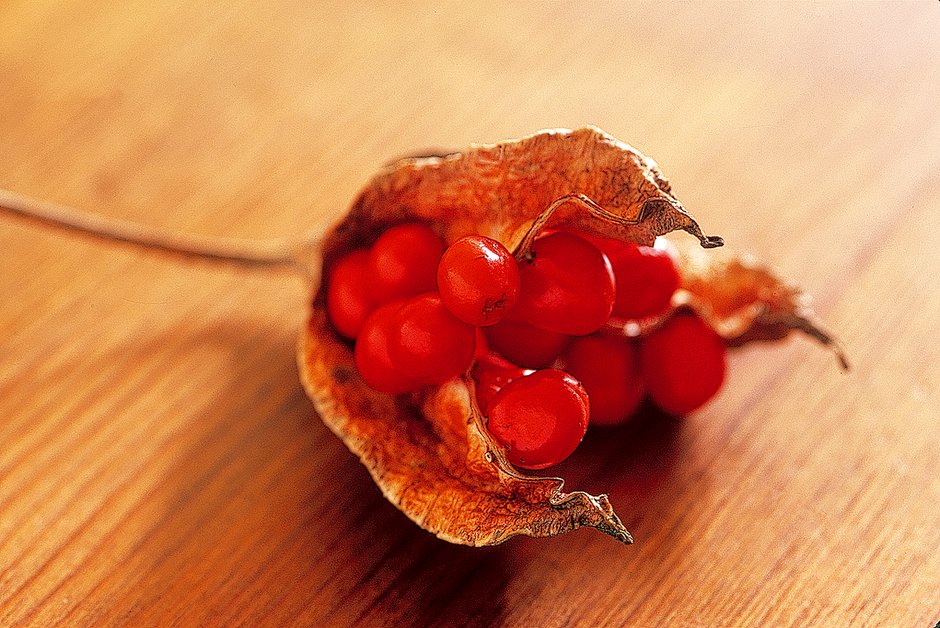Iris foetidissima
stinking iris
An evergreen perennial to 80cm, with glossy rich green leaves and small, yellow-tinged, dull purple flowers followed by large pods opening to show bright orange-red seeds, which persist into winter
Other common names
blue seggingladden
see moregladdon
gladwin
gladwyn
roast beef plant
scarlet-seeded iris
stinking gladwin
stinking gladwyn
iris ddrewllyd
Size
Ultimate height
0.5–1 metresTime to ultimate height
2–5 yearsUltimate spread
0.1–0.5 metresGrowing conditions
Moisture
Moist but well–drained, Well–drainedpH
Acid, Alkaline, NeutralColour & scent
| Stem | Flower | Foliage | Fruit | |
| Spring | Green | |||
|---|---|---|---|---|
| Summer | Purple Yellow | Green | ||
| Autumn | Green | Orange Red | ||
| Winter | Green | Orange Red |
Position
- Full shade
- Full sun
- Partial shade
Aspect
North–facing or East–facing or South–facing or West–facing
Exposure
Exposed or Sheltered Hardiness
H6Botanical details
- Family
- Iridaceae
- Native to GB / Ireland
- Yes
- Foliage
- Evergreen
- Habit
- Clump forming
- Potentially harmful
- Harmful if eaten. Wear gloves and other protective equipment when handling. Pets: Harmful if eaten. For further information and contact numbers regarding pets, see the HTA guide to potentially harmful plants
- Genus
Iris may be rhizomatous or bulbous perennials, with narrow leaves and erect stems bearing flowers with 3 large spreading or pendent fall petals, alternating with 3 erect, often smaller, standard petals, in late winter, spring or early summer
- Name status
Correct
- Plant range
- Europe, N Africa
How to grow
Cultivation
Grow in well-drained, neutral to slightly acid loam but will tolerate most soils in full sun, partial shade or shade
Propagation
Propagate by seed sown in pots in a cold frame in autumn or spring. Propagate by division of rhizomes from midsummer to early autumn
Suggested planting locations and garden types
- Cottage and informal garden
- Wildlife gardens
- Low Maintenance
- Flower borders and beds
- Underplanting of roses and shrubs
Pruning
Remove any dying foliage in autumn
Pests
Diseases
May be susceptible to aphid-borne viruses, bacterial soft rot and grey moulds; see Iris diseases
Get involved
The Royal Horticultural Society is the UK’s leading gardening charity. We aim to enrich everyone’s life through plants, and make the UK a greener and more beautiful place.
